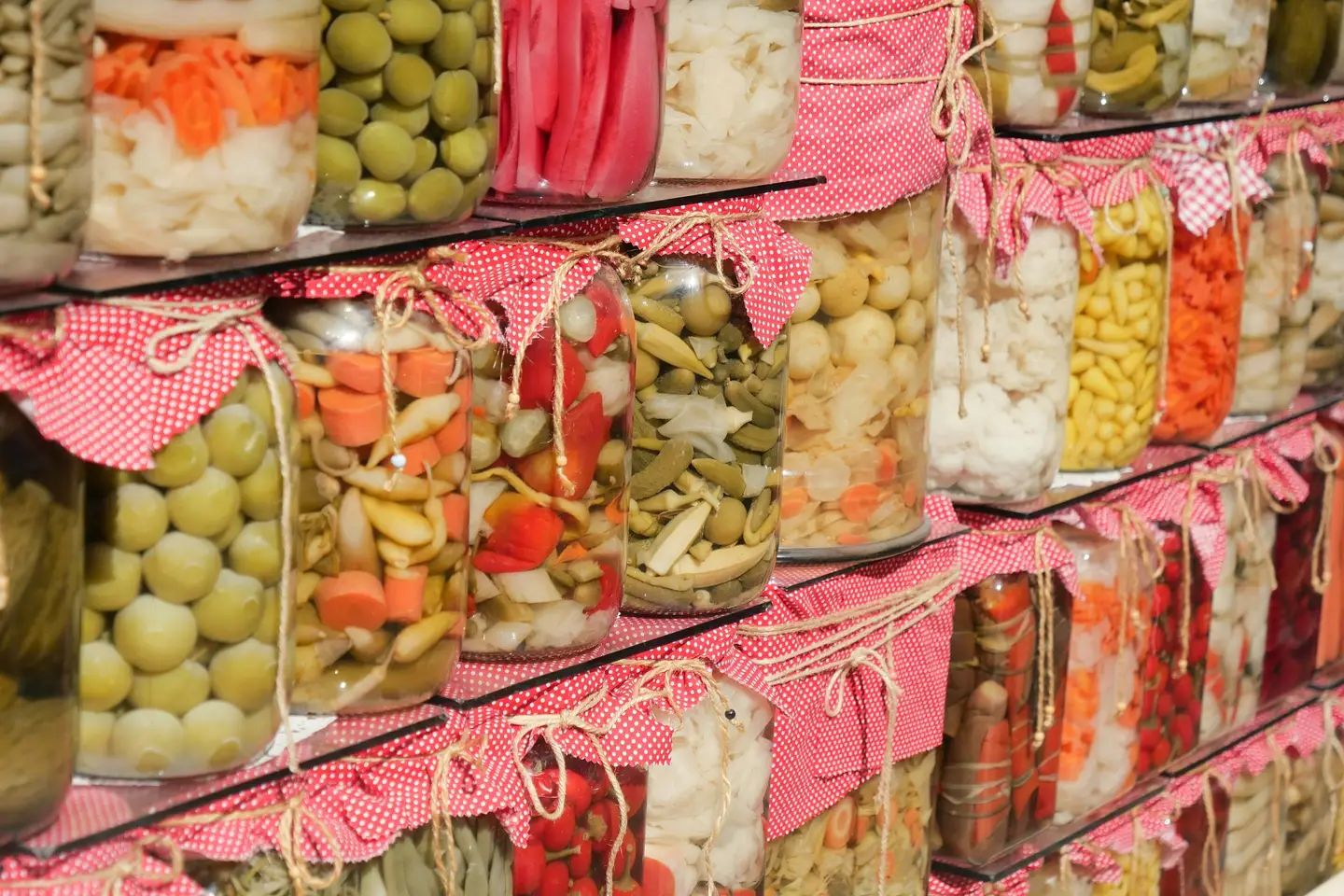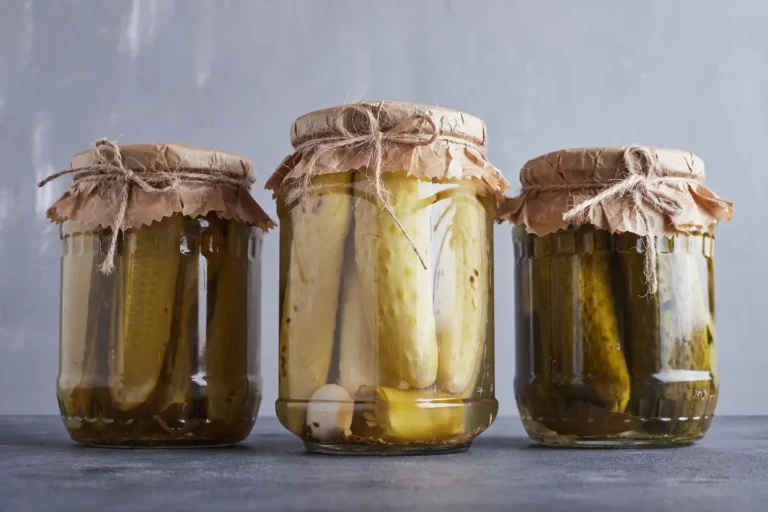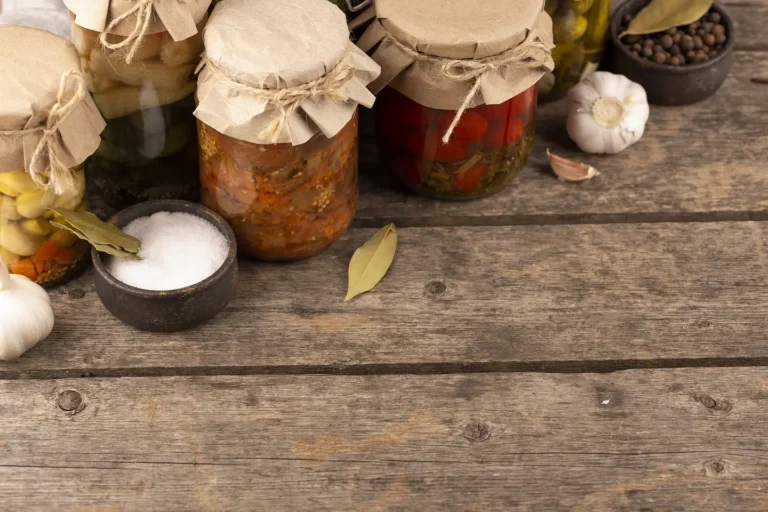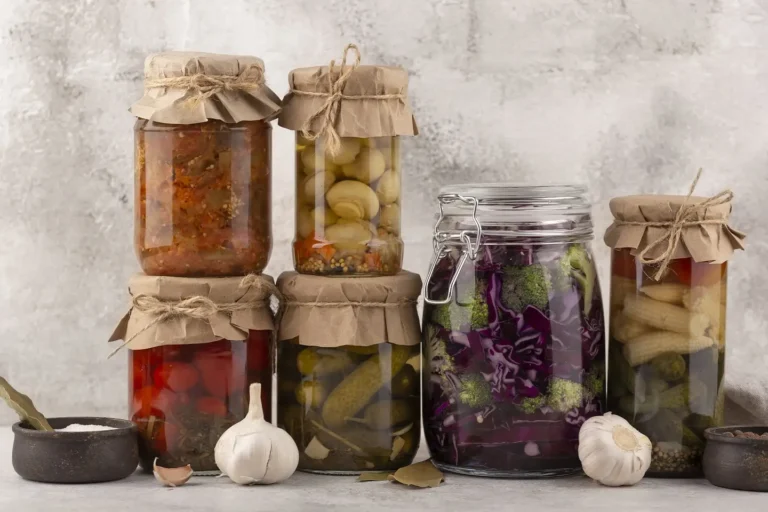Essential Hygiene Practices When You Ferment at Home
Fermentation – when we work according to the regulations – is one of the safest food preparation methods, as it is based on the displacement of pathogens. For this selection to be perfectly accomplished, we need to become more closely acquainted with the optimal environmental conditions for microorganisms.
Beyond ensuring ideal conditions, it is essential that we consistently follow basic kitchen hygiene rules throughout the process. Before we start working with the ingredients, let’s make sure that our hands, work surfaces, and tools are completely clean.
Cleaning and Sterilization Methods
When working with wild fermentation, it is not necessary to sterilize utensils, jars, and spoons – it is sufficient to wash them thoroughly with soapy water. However, if we use starter cultures, it is worth disinfecting all tools as well, since this ensures that we only multiply the microorganisms we have selected. For this, it may be suitable to wash them in a dishwasher without adding detergent, or boil the tools in a large pot of water. Even the microwave can be useful if we rotate the jars in it while wet, on high power.
Cutting Board Safety
It’s good to work with damage-resistant (granite, glass, metal) cutting boards. If we have fibrous (wood or bamboo) cutting boards, then to avoid cross-contamination, we should definitely designate one piece on which we only work with plant-based ingredients. Between the fibers, despite the most thorough cleaning and disinfection, animal-origin materials can remain, on which unwanted microorganisms can multiply. The most ideal is to have a separate vegetable cutting board and a separate fruit cutting board.
The board used only for chopping vegetables should preferably not be washed with soapy water (its residues can also settle between the fibers). Let’s use hot, vinegary water and a brush for cleaning instead, and after every washing, dry the board in a well-ventilated place. If our cutting board accidentally gets moldy, then soak it in hot, vinegary water for a few hours, clean it thoroughly with a brush, and finally put it out in the sun to dry (UV rays also have a disinfecting effect).
Tool Maintenance
Our cutting and chopping tools, as well as the spoons, forks, and tongs with which we reach into our containers, can also be kept clean with thorough washing. Let’s make sure that no animal-origin food or fat ever remains on them!
Oil and Fat Considerations
During heat preservation and canning, we have become accustomed to pouring oil on top of the product to create an airtight sealing layer on it. With this method, we sterilize the tools, cook the ingredients, and also steam the finished preserve – so microorganisms have no chance to multiply. However, during fermentation – as we have already seen – the opposite is our goal. The safe consumption of fermented foods is guaranteed by the fact that the resulting organic acids (or occasionally alcohol) create an unfavorable environment for pathogens, thus making their multiplication impossible. However, without emulsification, in fat droplets and oil layers, the selective inhibitory effect of ethanol or low pH cannot take effect, so even pathogenic microbes (for example, bacteria causing salmonellosis, botulism) can gain ground.
Therefore, let’s mix our fermented foods with fats at most only after fermentation is complete, for example in the form of a sandwich spread that we store in the refrigerator and consume within a few days, or directly on the plate, say as a good salad dressing.
Seasonality and Locality
Our fermentation experiments will be most successful if we use ingredients appropriate to the season. If possible, let’s choose locally grown vegetables, fruits, and seeds from chemical-free farming, or grow and gather the ingredients ourselves. I have summarized the most important criteria needed for selection before each recipe.
Since the composition of our gut flora depends primarily on our living environment, by consuming foods grown in the same geographical environment, we can naturally strengthen our immune system – and provide livelihood to those living near us. If we don’t have the opportunity to obtain organic ingredients, let’s not be discouraged; even vegetables and fruits from conventional farming are better than none.
How to Use This Blog
In the Fermentation 101 section of the blog, I always discuss in detail the basic principles worth paying attention to, but let’s confidently leave the choice to our taste and life rhythm.
I strove to present the simplest possible recipes, while also collecting numerous variation possibilities alongside them. In the basic recipes, I generally used simple seasoning that appeals to broader public taste, while among the tips, more special flavorings, combinations, and usage methods were also included. Although the primary fermented foods and drinks featured in the book are all plant-based without exception, the dishes made from them are not always so. I endeavored to ensure that with a small modification, the recipes can be easily integrated into any diet. Wherever possible, I tried to offer traditional alternatives at least among the tips.
Getting Started Recommendations
If we are brave and adventurous, let’s flip through the blog posts and choose a few appealing pictures or descriptions that can be realized during this time of year. If we would rather get acquainted with the novelties more cautiously, then let’s choose already well-known flavors: cucumber in summer, cabbage in autumn and winter, sandwich spreads, elderflower syrup in spring, hummus, or some fermented dough. We have probably encountered these flavors before, or at least know what what we made “should” taste like.
After that, we can boldly try our other favorite seasonal plants. Let’s start with small batches and try everything in order. Or if we found our favorite, let’s make it in series. As we gain more routine, we become braver as well. It may happen that there will be vegetables or fruits that we will love raw, roasted, and cooked, but for some reason we don’t find them authentic when fermented. But the opposite can also be true – and both are completely fine. It’s best if we can maintain our openness and childlike curiosity throughout.
Advanced Experimentation
In the next step, let’s start experimenting with spices and pairings. Let’s try those I suggest in the recipe posts, or trust our intuition and create our own “fermentation universe.” Then let’s venture into slightly different waters and try what it feels like to work with refreshing drinks, or what the rhythm of sourdough making and vinegar production is like.
Most people I’ve talked to confirm my experience that in summer we crave strong salty and sour flavors less. At such times, it’s more worthwhile to acidify with 2% brine, or experiment with various fruit drinks and plant cheeses. In winter, however, our digestive system adapts to consuming more calorie-dense foods – at such times there’s no better choice than sourdough baked goods, fermented legume creams, and dry-salted pickles.
Health Considerations
Naturally, if we have known chronic diseases, then before diving headfirst into fermentation, let’s consult with our treating physician and a nutritional counselor who is experienced in the practical application of fermented foods.
Recipe Guidelines and Flexibility
It’s important that we treat the quantities given in the recipes (except for the percentage ratio of salt and sugar) as simple guidance in every case, since this genre is about the freedom of creativity and playfulness. Depending on the freshness, water and nutrient content of plants, and the current season, they always behave a little differently: they collapse more or less, contain more or less carbohydrates or moisture, and their fibers are easier or harder to work with. That’s precisely why exactly how much ingredient will fit into each container always becomes clear when we work with it. I have prepared several aids for estimating the necessary quantities, which can help us initially. But as we become more experienced over time, we’ll be able to tell at a glance how much of what we’ll need. Let’s trust our senses and instincts!
Community and Sharing
If we’re open to it, let’s involve our family members and friends in the experimentation too. Let’s prepare pickles together or exchange cultures and finished delicacies among ourselves. It will be a very interesting discovery to experience that although we can work according to completely identical recipes, different flavors will still emerge from each of our kitchens (more precisely, from under our hands). Moreover! We’ll soon realize that despite all our efforts, we won’t be able to make the same thing twice – yet every jar will be unique and wonderful. Let’s not delay: today is the most appropriate day to start. Let’s simply ferment!







